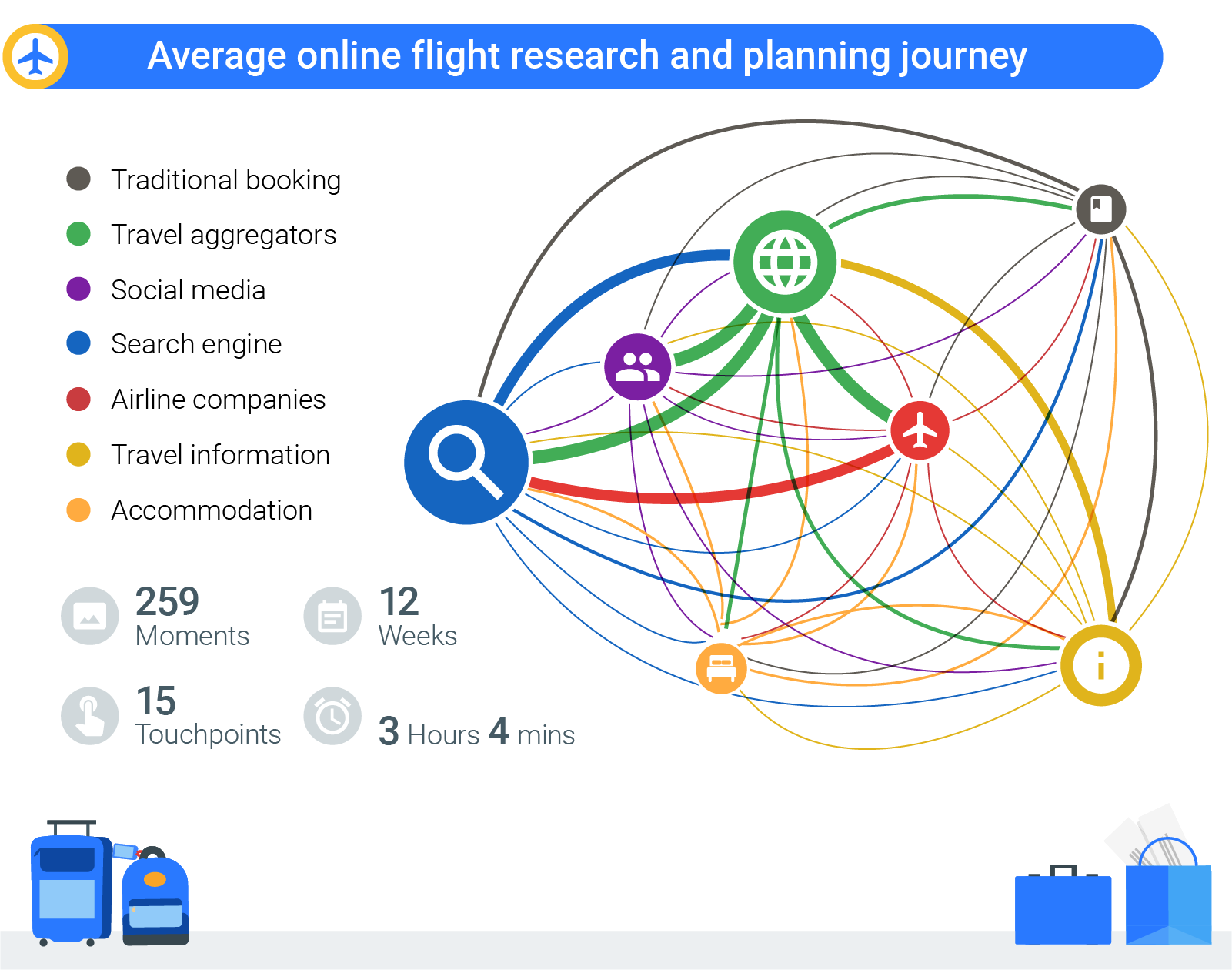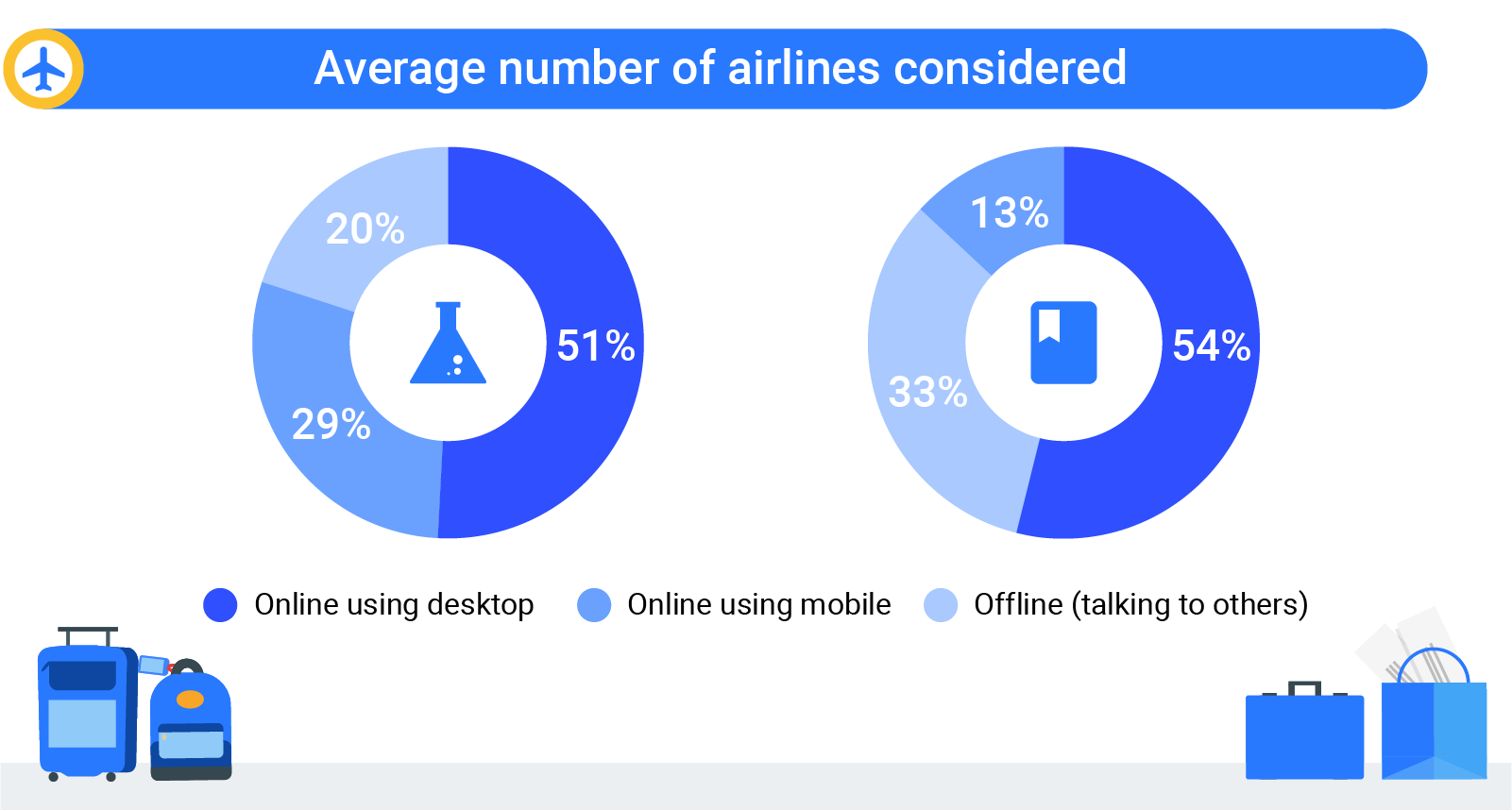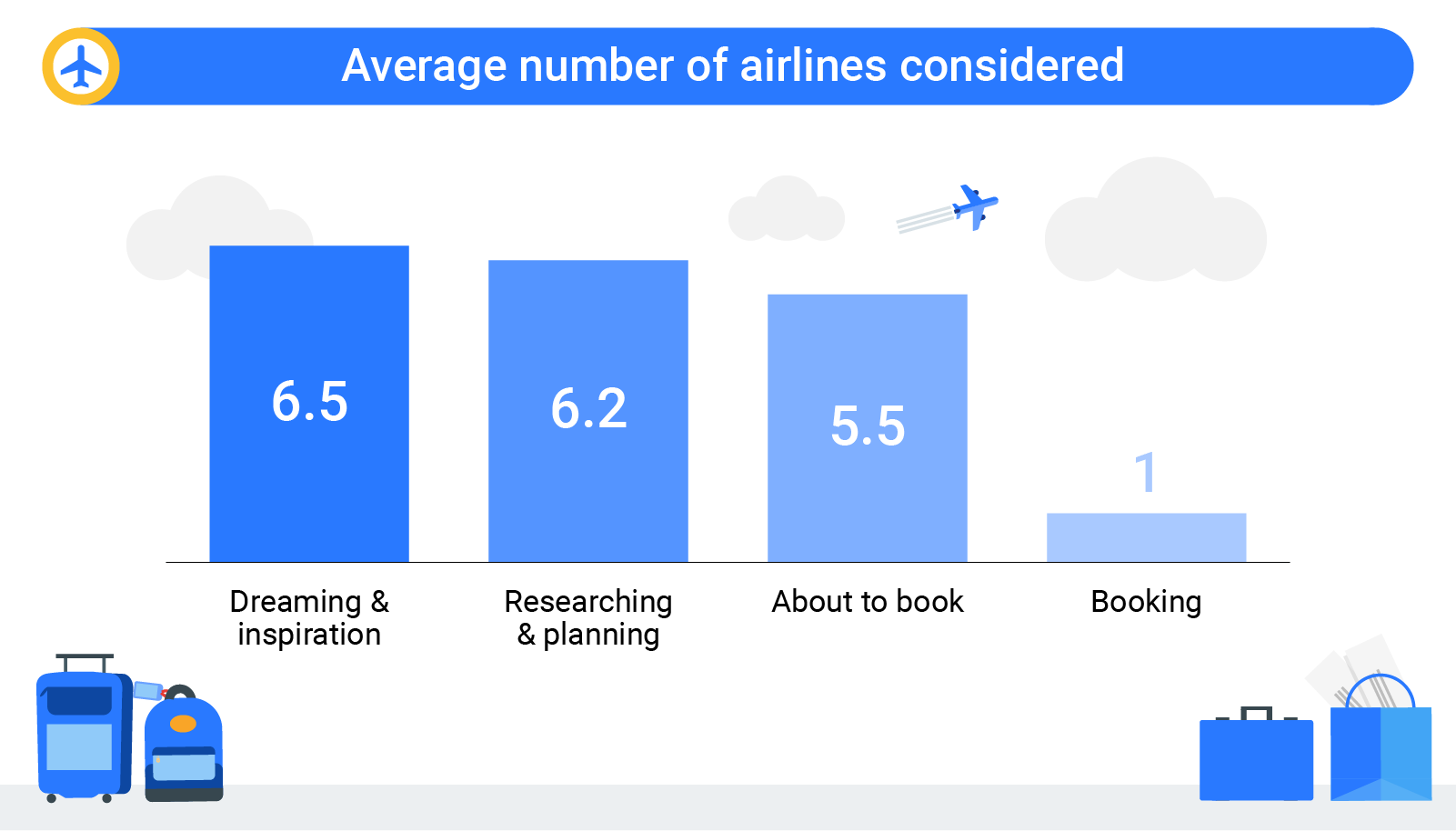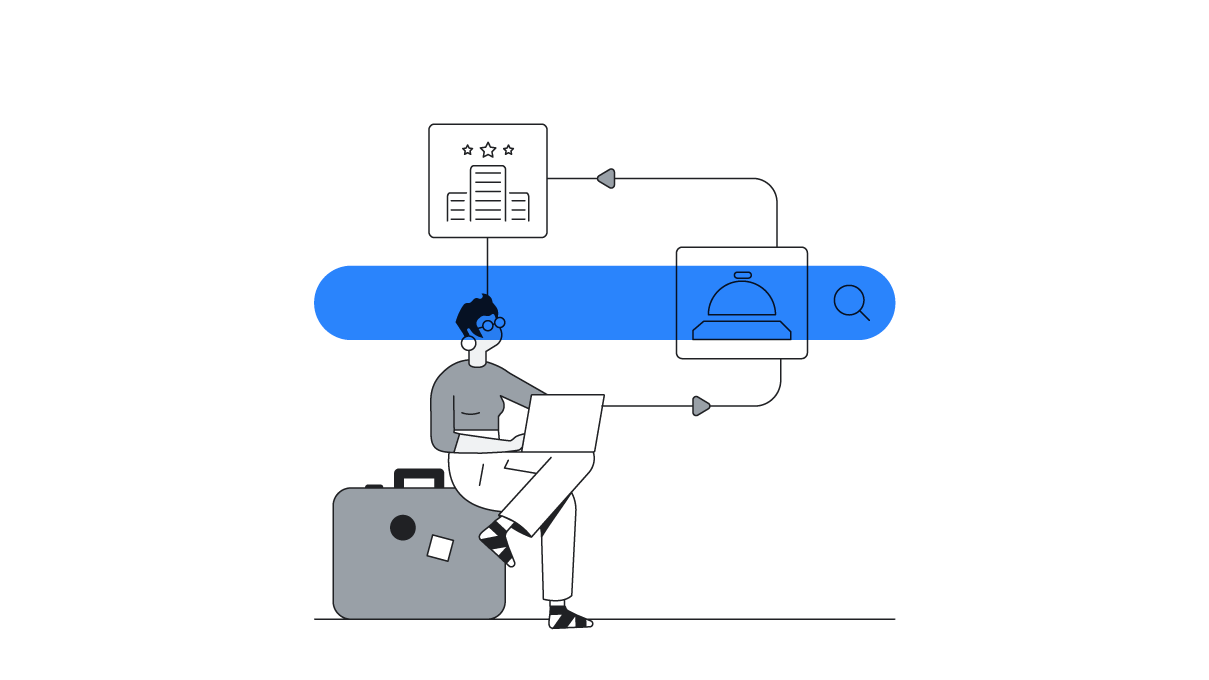In partnership with GfK, we embarked on an innovative cross-device clickstream study to help marketers better understand how they can be useful and relevant for Aussies in the market for international flights.
Across nearly every industry, consumers are spending more time using digital—and multiple devices—to research and consider purchases. As the customer journey gets more complex and fragmented, the most important decision-making is happening long before consumers reach out to a specific brand.
This has created a unique and daunting challenge for today’s marketers, but there’s still a silver lining: In the 250+ individual moments when consumers go online to research flights,1 travel brands have fresh opportunities to stand out and be considered.
To help marketers understand Aussies’ actual online behaviours during the research process, we passively tracked everything that an opt-in panel of 616 consumers clicked, visited, and searched for in relation to their flight purchase over the course of eight weeks. Here, we’ll break down three key learnings and takeaways for brands to win Aussies’ attention and loyalty along the way.
1. Travellers have become their own travel agents
Between comparing airlines, prices, dates, flight times, and amenities, travellers spend significant time and effort perfecting their trip. Long gone are the days of sitting down at a travel agent’s desk to hammer out the process in one go. Consumers today are using multiple devices to plan their own trips whenever and wherever it’s most convenient.
Watch Shane's full interview here.2
The trip-planning journey is no longer simple or linear—it’s a long and complex process that takes 12 full weeks, on average, amounting to 259 unique online research moments.1 Online search sits right at the centre, helping travellers navigate back and forth between different touchpoints.

Key takeaway
Most decision-making takes place long before consumers are ready to contact a specific brand. Marketers need to be present at key moments of intent with useful and relevant information to help simplify a daunting planning process for travellers. Showing up with relevant search ads in the early stages of the booking journey is crucial to being included in travellers’ consideration sets.
2. Travellers don’t necessarily book where they research
While our research revealed that travellers do most of their trip planning and research online, one in three travellers still book offline.1 And interestingly, offline purchasers also tend to spend the most.1 Because they’re highly invested in making well-informed decisions, they spend a significant amount of time online planning and researching their options—even more than travellers who book online.
Watch Olivia's full interview here.2
And consider this fact: Though one-third of all travellers’ research happened on mobile, only 13% actually booked on mobile.1 Mobile might not receive the lion’s share of online bookings, but it’s still highly influential in travellers’ early research moments—even for offline purchasers—because their purchase decisions are often made on mobile before they book offline or online via desktop.

Key takeaway
Brands can ensure they’re properly attributing sales by valuing the sources travellers use to inform their purchase decisions, not just where they actually make their purchases. At the same time, a good deal of pre-booking research takes place on mobile, so having a mobile-optimised website is key to making navigation simple and seamless.
3. Travellers are increasingly more loyal to their needs
Although consumers might prefer certain airlines, loyalty can go right out the window based on how well available flights fit with their itineraries, accommodations, available travel packages, and budgets. When planning their trips, 87% of people said they hadn’t decided on a particular airline.1 Whether flying solo or travelling with kids, consumers are looking for the airline that can best accommodate their needs—and that ultimately determines which brand they decide to book with.
Watch David's full interview here.2
Our research revealed that when travellers are looking for ideas and inspiration, they’re considering as many as six airlines. Here’s the kicker: Even as they’re about to book a flight, they’re still considering five separate airlines.1 Most travellers are open to considering new brands right up until they make a purchase, which presents a wealth of opportunities for brands to show up and make their mark.

Key takeaway
In the moments travellers go online to research and plan for their trips, they’re looking for robust, helpful information to ensure they’re making the best decisions. Brands can be a guiding light at every step of the journey by using audience data to understand who their most valuable customers are—and then targeting them with more relevant, personalised messages.
Understand and adapt to become travellers’ first choice
As the path to purchase becomes more complex, there are more moments than ever when consumers are leaning in with intent. By leveraging data and machine learning models, marketers can better understand the customer journey and the ways that travellers plan their trips to be helpful and relevant at each step. That way, travellers can enjoy the peace of mind that they’ve made the best decision and their plans are fully set before they jet.
Methodology
From August–October 2016, Google tracked an opt-in panel of 616 consumers age 18–80 who plan to book an international flight in the next three months and have at least one connected device. Online behavioural data (site visits, searches, app usage, etc.) was captured via passive meter tracking across smartphone, tablet, and PC, and offline behaviour was captured via weekly diaries and an exit survey.





